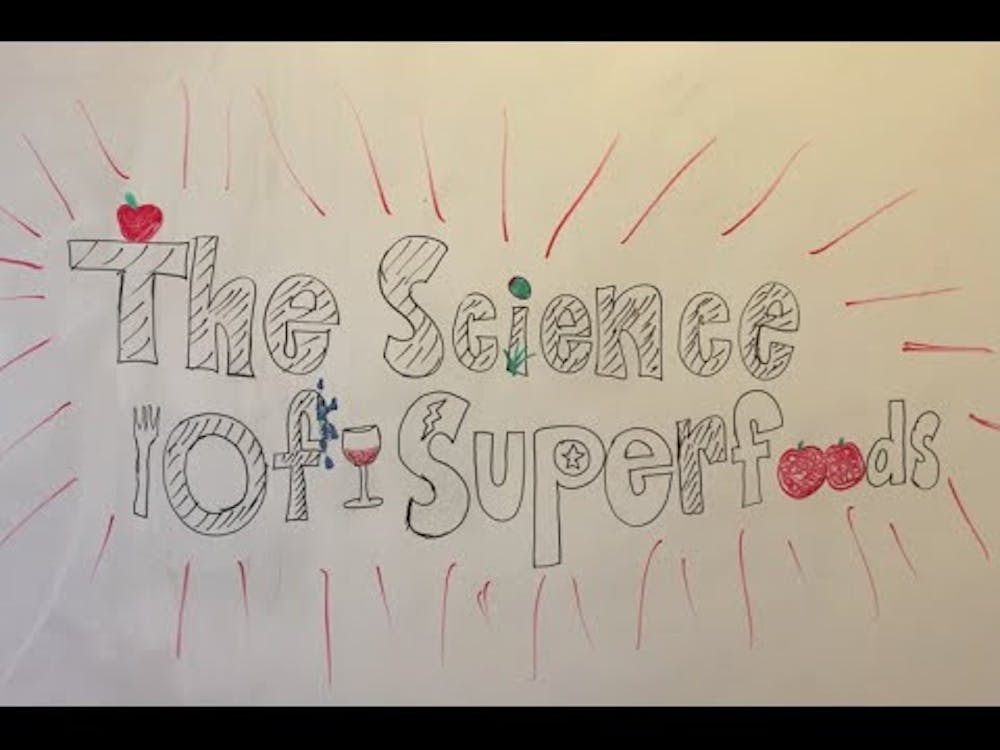Superfoods, such as blueberries, kale and chia seeds, have become a nutritional craze over the past few years — one that has even touched ground on campus. Some nutrition pundits have praised their alleged health benefits, but the truth behind these claims has sometimes been seen as scientifically questionable.
“I am not a fan of the term ‘superfoods’, though we do have a term called ‘functional foods,’” said Mary Flynn, associate professor of medicine. The word superfoods is misleading because it elevates these foods to seem better than all other foods, Flynn said.
A functional food is one that has some health benefit beyond what is normally anticipated, such as anti-inflammatory, antioxidant or memory-boosting properties, said Joshua Bomser, associate professor of human sciences at Ohio State University.
Foods typically categorized as superfoods often have a lot of phytonutrients — natural chemicals derived from plants — that have been shown to have various health benefits upon consumption, Flynn said. A diet high in phytonutrients can decrease a person’s risk of chronic diseases, she added.
Blueberries and kale are commonly hyped up as superfoods, but they may not be the only foods with particular health boosts, Flynn said, adding that blackberries and raspberries probably have similar health benefits to blueberries, and other dark leafy greens have similar health benefits to kale.
Students interviewed for this article expressed mixed opinions on superfoods.
Emma Murray ’16.5, a student who learned of superfoods while working on a farm, believes they are worth the time and money. “Your body is one of the things you truly own, and you should take care of your body,” Murray said, adding that she experiences improved energy levels and heightened happiness when she eats healthily.
Flynn said she has been skeptical of many of the lists of superfoods she has seen, adding that she questions the methods used to classify certain foods as superfoods. It is important that a list of superfoods clearly explains why each food is on the list, Flynn added.
“Focusing too much on one food or one food group takes away from the idea that we should be having ‘super-lifestyles’ instead of superfoods,” Bomser said. It is important that people pay attention to other aspects of their well-being, such as their overall diet and tobacco and alcohol intake, he added.
Much of the craze surrounding superfoods has been spawned by food companies marketing them as a “magic bullet” for good health, Bomser said. In reality, eating superfoods must be supplemented by other lifestyle factors, which the companies do not emphasize, he added.
“Telling people to eat a moderate portion size isn’t sexy,” Bomser said.
“I’ve always been kind of skeptical about the claims,” said Duncan Weinstein ’17.
People can eat healthy foods in an unhealthy way, such as when a banana is put into a banana peanut butter smoothie with 2000 calories, Bomser said.
The Ivy Room offers customers the option to include kale in their smoothies, but not many people order it, said Peter Tun ’17, who works for Brown Dining Services. Spinach, too, is relatively common at Brown dining halls, he said.
Bomser said more research regarding the underlying mechanisms of functional foods’ effects on the body is required.





